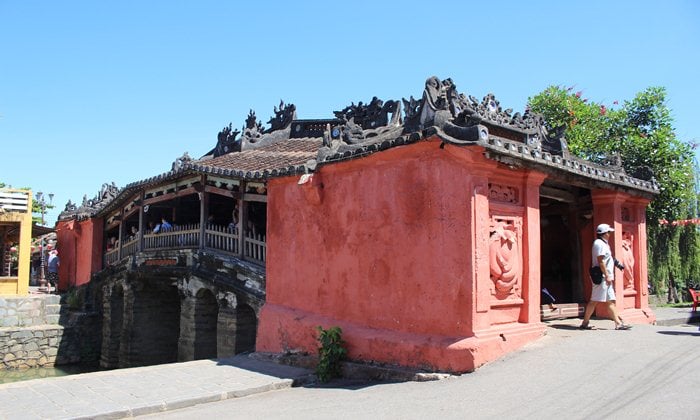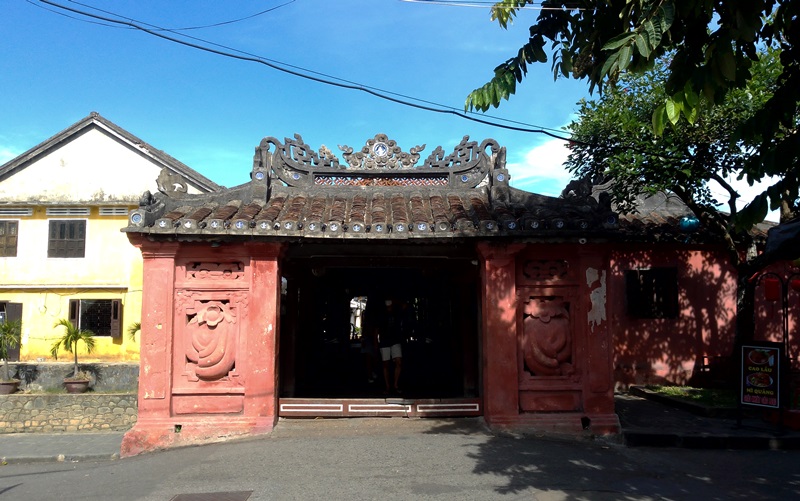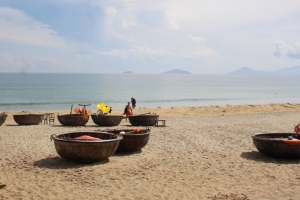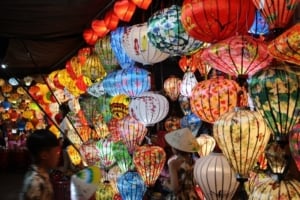Japanese Covered Bridge is a historical and cultural relic in Hoi An City, Quang Nam Province, attracting plenty of domestic and international tourists to visit.
Japanese merchants built the bridge in the early 17th century. Thus, the local people name it the Japanese bridge. This one is the only remaining Japanese architectural work in Hoi An Ancient Town.

Japanese Covered Bridge
This famous Japanese bridge has still been a well-known tourist attraction in Hoi An for over the past 400 years.
- Address: Located at the section adjacent to Nguyen Thi Minh Khai and Tran Phu Streets, Minh An Ward, Hoi An City, Quang Nam Province, Vietnam.
- Opening hours: 24 hours.
- Entrance fee: 150,000 VDN/guest. The ticket covers the five monuments in Hoi An Ancient Town.
When you visit the Japanese Bridge, you need a ticket. The entrance fee for this site is also included with other monuments. If you have already used all slots in the other spots, you can still cross the bridge with that ticket, but not enter inside the temple that is next to the bridge. Thus, please always keep your ticket when you enter the ancient town!
Vietnamdrive’s tip
The Japanese Bridge, being on the list of the ancient covered bridges in Vietnam, has a typical architecture curving through a small creek flowing into the Hoai River (a branch of Thu Bon River). According to legend, the bridge is like a sword stabbing down the back of the Namazu monster, preventing it from wagging its tail causing earthquakes, and bringing peace to the people.
In 1653, people built a temple next to the bridge, connected to the northern railing, protruding in the middle of the bridge, so the local people called it the Temple Bridge (Chua Cau).
The unique feature of the temple is that the main hall does not worship Buddha but the North God, Bat De Tran Vo, who protects the land, and country, giving blessings, joy, and happiness to people. Worshipping this god, the locals want to express the divine desire to pray for peace for everyone.
On the main door of this ancient temple is a large sign embossed with three Chinese characters: “Lai Vien Kieu”. According to the historical story, in 1719, Lord Nguyen Phuc Chu visited Hoi An Ancient Town and saw the unique Temple Bridge, so he named it Lai Vien Keu (a friend’s bridge from afar).
The two ends of the bridge are standing wooden animals. One end has two dog statues, and the other has two monkey statues. These animals represent the year of construction and completion. Dogs and monkeys are also animals that the Japanese worshiped from ancient times and they are here to keep the bridge.
The architectural structure and interior decoration of the Temple Bridge cover the imprint of the Japanese culture, the square wooden columns connected together tightly and firmly. In the middle is a wooden passageway, and the two sides have corridors with seven compartments for the guests to rest and enjoy the view. The roof of the bridge has a yin-yang tile roof looking soft with a downward slope.
The Japanese Covered Bridge underwent at least 6 restorations but still retains its ancient features. The temple and the bridge are made of strong ornate wood, which can live with time. The face of the Temple Bridge turns to the Hoai River, opening up a spacious viewing space for visitors. In particular, the image of this ancient bridge is printed on a bill of 20,000 VND.
The Japanese Bridge reflects the shade in the water in the quiet at night, creating a magical feeling for the ancient town of Hoi An. In 1990, this old bridge was recognized as a national historical-cultural relic.




